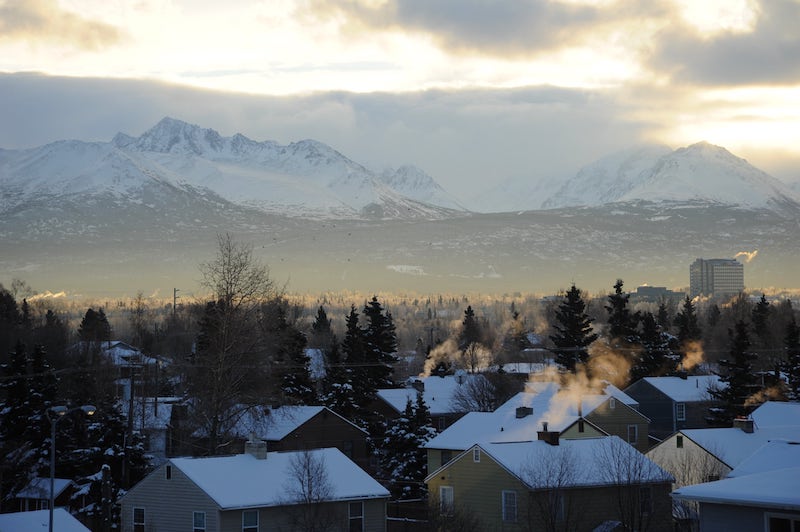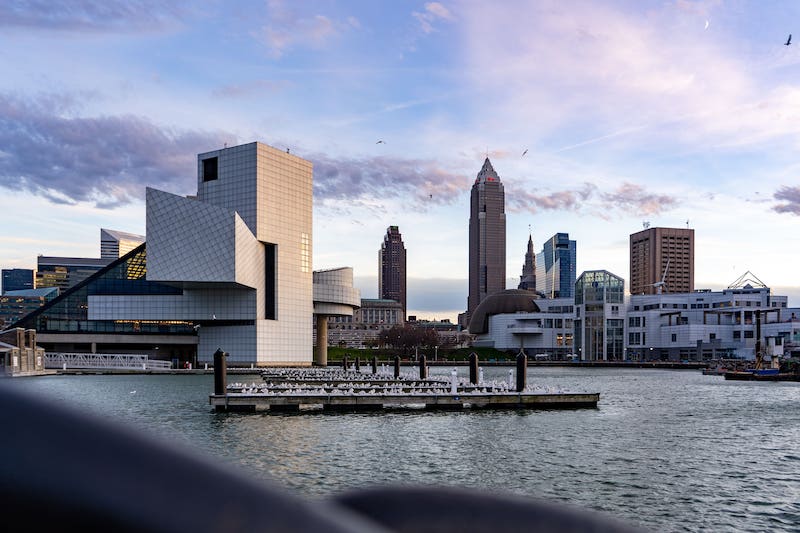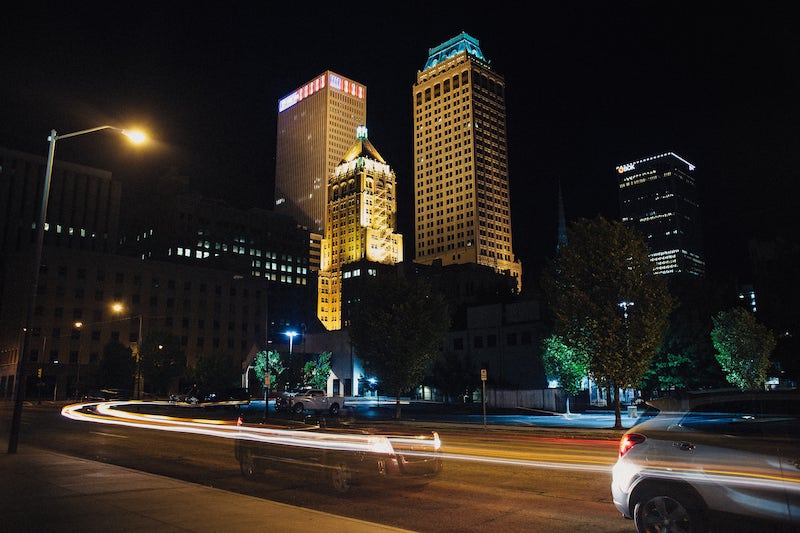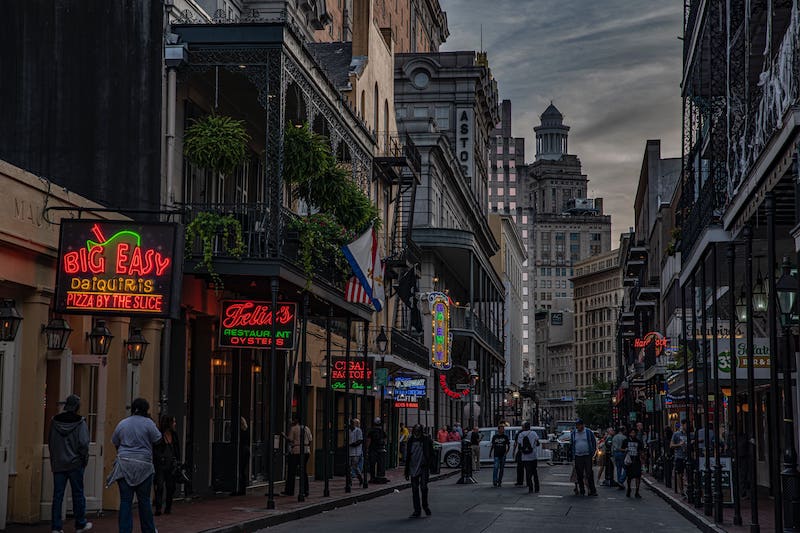As part of our efforts to shed light on the unique security concerns women face, we’ve analyzed and identified the most dangerous cities for women in the US using FBI/National Census statistics.
Find out which US-based cities are among the 5 most dangerous places for women to live. Learn more about our methodology below.
Curious about how women approach moving to a new location? Check out their thoughts here.
???? Discover the safest cities for women in the USA.
Overview
There’s a few traits shared by all of the most dangerous cities for women.
Size
The most dangerous cities for women are large cities, in contrast to the safest cities, which have smaller populations.
This suggests there is some correlation between population density and crime rate—but only to an extent.
New York City, for example, has a much larger population size in a significantly smaller area than all of the cities listed below, yet it isn’t as dangerous.
Population density and size are not, therefore, the deciding factor when it comes to crime rate.
Historical Context
The types of crimes committed the most in each city reflect certain aspects of their history.
New Orleans, a city well known as a historic ‘party’ destination with a prominent sex industry that’s existed for hundreds of years, has the highest number of rapes in the country.
Detroit, a city plagued with very high levels of poverty and unemployment for decades, has by far the highest number of aggravated assaults.
Check out the list below.
Top 5 Most Dangerous Cities
1. Detroit, Michigan

- Population: 674,841 (highest)
- Rape: 103.91 per 100,000
- Aggravated assault: 1,519.55 per 100,000 (highest)
- Property crimes: 4,540.60 per 100,000
Detroit, Michigan has struggled with extreme levels of poverty for decades. Nearly a third of all households make less than $15,000 a year, putting 30.6% of its population well below the federal poverty line (currently defined as a family of three making less than $21,330 a year).
Even more alarming is that more than half of all children in Detroit are in poverty. Though the poverty rates have improved marginally over the last ten years, aggravated assaults reported by the FBI for 2019 are wildly disproportionate to every other city in the country.
Source: Detroit No Longer Poorest City In U.S.: Census Data
2. Anchorage, Alaska

- Population: 293,531 (lowest)
- Rape: 132.01 per 100,000
- Aggravated assault: 799.49 per 100,000
- Property crimes: 5,415.82 per 100,000
Anchorage is the largest city in the state of Alaska, with a population of 291,247. This accounts for 40% of the total population of the state. Though the poverty rate sits below the national average at 9.03%, the biggest demographics living in poverty are females aged 18-24, followed by females aged 25-34.
The median property value is higher than the national average, which may explain the unusually high property crime rates. Rape and aggravated assault rates are also high—Alaska is widely considered the deadliest state for women in the US, with 59% of women living there experiencing intimate partner violence, sexual violence, or both.
Source: DATAUSA
3. Cleveland, Ohio

- Population: 385,282
- Rape: 128.97 per 100,000
- Aggravated assault: 700.14 per 100,000
- Property crimes: 4916.04 per 100,000
By some estimates, Cleveland currently has the highest poverty rate among large cities in the US. Like Detroit, about half of all children in Cleveland live in poverty.
The rape rate is significantly higher than in Detroit, and property crimes were also somewhat higher. Cleveland was recently ranked the worst city for black women in America by City Lab, which is particularly troubling given that almost half the city’s population identifies as African-American (47.6%).
Sources:
City of Cleveland Black Women and Girls Commission
Quick Facts, Cleveland city, Ohio, United States Census Bureau
4. Tulsa, Oklahoma

- Population: 402,324
- Rape: 104.48 per 100,000
- Aggravated assault: 680.96 per 100,000
- Property crimes: 5,455.61 per 100,000 (highest)
Tulsa is known as a city with a long and turbulent history of systemic racial oppression that continues to create great rifts in poverty, employment, and incarceration rates. Tulsa’s black poverty rate is 34%, while the white poverty rate is 13%.
Equality issues extend to gender-based concerns. The rate of female incarceration in Tulsa is about twice that of the national average, which is a major contribution to Oklahoma’s disproportionately high rate of female incarceration. Unsurprisingly, women of color are disproportionately represented. The rate of property crimes in the city was particularly high.
Sources:
Policing, Poverty, and Racial Inequality in Tulsa, Oklahoma
Tulsa Equality Indicators
5. New Orleans, Louisiana

- Population: 390,845
- Rape: 144.67 per 100,000 (highest)
- Aggravated assault: 608.13 per 100,000
- Property crimes: 4,243.84 per 100,000
New Orleans had the highest rate of reported rapes in the country. In 2010, over 800 untested sexual assault kits were found to be in possession of the New Orleans Police Department. As a result of the scandal, there is likely more onus on the city to accurately report rapes, hence it topping the list.
Despite Louisiana ranking as the worst state in Bloomberg’s annual gender-equality ranking in 2017, the city managed to obtain a perfect score from the Human Rights Campaign’s Municipal Equality Index as a result of its efforts to improve the social standing of black trans women, the most marginalized community in the city.
Sources:
Analysis of Untested Sexual Assault Kits in New Orleans
City of New Orleans Earns Perfect Score from Human Rights Campaign’s Municipal Equality Index
Vermont, Maryland Are No. 1 in Bloomberg Equality Rankings
At a glance
Highest number of rapes: New Orleans, Louisiana
Highest number of aggravated assaults: Detroit, Michigan
Highest number of property crimes: Tulsa, Oklahoma
You can view regularly updated crime maps of your town, city or state on CrimeMapping.com to gain a stronger sense of where it is most dangerous to live near you.
Our Methodology
Using the most recent FBI statistics on crime rates, our list emphasizes the crimes that disproportionately affect women—rape and aggravated assault.
Crime rates are given per 100,000 people (i.e. there were 144.67 rapes per 100,000 people in New Orleans, Louisiana).
We have included property crime rates among our considerations because it has a strong impact on how ‘safe’ a person feels in their home, neighborhood, and city..
However, this is not considered in the ranking of the cities because there is no data to suggest any correlation between gender and victims of property crimes.
For the sake of relevance, communities considered are only those with populations above 100,000. Population sizes will have changed since the last census (conducted in 2019). Communities with just a few hundred or a few thousand members have much lower crime rates.
Though the FBI’s statistics are the only crime rate statistics available in the US provided by the government, the only crime that cities are required by law to report is murder. This means the list should not be considered a completely exhaustive report on crime, but a guideline.
The FBI discourages rankings because the data can ‘unfairly’ represent the effectiveness of specific law enforcement agencies. Crime is caused by a wide range of sociological factors. Our rankings do not indicate anything at face value about the effectiveness of law agencies.
In addition, given the persistence of a rape culture that discourages reporting rape and other sex crimes, the actual number of rapes to occur in any given city is likely significantly higher than what appears on the list.
In fact, 1 in 5 American women have faced either attempted or completed rape in their lifetime. Of all rape victims, 90% are female.
Definitions
- Violent crime – includes murder, homicide, assault, battery, in addition to all types of sex crimes.
- Property crime – includes burglary, larceny theft, motor vehicle theft, etc. Arson is not considered a property crime.
- Sex crime – includes statutory rape, sexual assault, prostitution, human trafficking, as well as all relevant offenses against children.
Data Source:
U.S. Census Bureau, American Community Survey, 2019 1-Year Estimates, Compiled by The Center for Community Solutions, Large U.S. cities with total population above 300,000.
FBI – https://ucr.fbi.gov/crime-in-the-u.s/2019/crime-in-the-u.s.-2019/tables/table-8/table-8.xls/view
If you or someone you know is a victim of domestic violence or other forms of abuse, you can access various helpful resources at NCADV.
Below are additional city-specific resources.
Detroit, MI: https://www.domesticshelters.org/help/mi/detroit
Cleveland, OH: https://www.domesticshelters.org/help/oh/cleveland
Anchorage, AK: https://www.domesticshelters.org/help/ak/anchorage
Tulsa, OK: https://www.domesticshelters.org/help/ok/tulsa
New Orleans, LA: https://www.domesticshelters.org/help/la/new-orleans
